When I exit the Oedo Subway Line's Daimon Station, I find myself inside an ebullient throng of Chinese tourists headed in the direction of the prominent Jodo-shu (Pure Land Sect) Buddhist Zojoji Temple. The temple's oldest structure, the elegant 1622 red-lacquered Sangedatsumon gate, is a National Important Cultural Property. Its beauty, plus the intriguing dichotomy between temple buildings and Tokyo Tower in the background attracts shutterbugs and tourists from around the world.
Electing a less populated path to explore, I head south through Shiba Daimon, under a scintillant blue sky. One Chinese tourist peels off from her group and follows me, a few paces back. As I start to shoot photos, she peers over my shoulder, judging the composition. I'm a bit frosted, but then she shows me her weathered 35-mm Seagull, and loads it with film. I smile, recalling how carefully I used to parse out those precious 24 shots to a roll. She takes two snaps, waves at me, then dashes off to rejoin her group.
As I walk on, razor-sharp light begins to slice through the canyon of tiled office buildings in the district, spotlighting every bit of dust or smear of exhaust-fan grease on the morning facades of cheap restaurants. A couple of men strike James Dean poses, leaning inside a parking garage, inhaling their midmorning smoking break. I pass a grim park shaded by concrete, where salarymen slouch, spirited away by their cell phones. The area feels more than half-drab.
As I approach the overhead Shuto Expressway, however, the landscape changes to predominately two-story buildings, many a bit shaggy, but most graced with plants and personal touches.
Musing on the impact of plants on urban landscapes, I stop to admire a camellia bush blooming up a storm in front of an old residence. I attract the wary attention of Isao Miyazaki, 77, who lives in the neighboring house.
"The woman who looks after this tree is in the hospital right now," he tells me. I point out that from each of her camellia flowers, it looks as if a teardrop is about to fall. "That's nectar, I think," he says, but we both stare at the tree for a bit, as though pondering other possibilities.
Miyazaki explains that during his days working as a tailor, no building in Shiba Daimon was more than two stories high. "But recently, land speculation is changing everything," he laments. Miyazaki feels the social threads coming loose. "We used to have great festivals," he says, "but now we don't have enough locals to even carry the mikoshi (portable shrine)."
This is much the story across Tokyo, I think, as we part ways, but I carry Miyazaki's words with me, paying renewed attention to a string of little stores overshadowed, literally and figuratively, by the highway above them. The street-level sliding glass doors found in such neighborhoods lend to businesses an aura of accessibility and community, I think, opening one adorned with gold calligraphic kanji.
Inside Hiromoto-ya, a jumble of plants thrives in a steamy comfortable aroma of baked cotton. Shop owner Kenji Hiromoto, 67, sits in the corner of a raised tatami room, passing first a hissing kirifuki (atomizer) and then a fat iron over a festival yukata (summer kimono). Hiromoto's trade is araiharigyo, or the laborious unstitching and thorough cleaning of kimono. "It's a job that's vanishing," Hiromoto says.
Today, however, he is ironing a backlog of happi coats from September's festivals. "My mother just passed away," he explains, never once pausing the rhythm of misting and stroking. I offer my sympathies, and he tells me to sit down for a while. "At age 18," Hiromoto says, his eyebrows raised as he deftly repositions the happi, "I tried working at a convenience store. It just made no sense to me. It was non-sense."
There is a profound calm to his measured movements, to the tertiary colors of his workspace, the fizzle of the atomizer, the regular thunk of the iron moving back and forth. Light weaves through his orchid leaves and potted plants, and I find myself loath to leave the "sense" of his space. "You know, people tell me my plants outside are obstructing traffic," Hiromoto says, as I'm on my way out. "Nonsense," I call back.
Nearly next door, an attractive brass plate reads "All Light Co., Ltd." I knock, but no one answers. All right, I think, and peer into the next store window, which displays slightly dusty, sun-bleached figurines of clowns and a scattering of harmonicas.
Before Shigeyuki Hasegawa, 68, explains his work to me, he lets me know that his neighbor, Tadashi Nakamura of All Light Co., used to design bespoke lighting fixtures. "He just closed up shop," Hasegawa tells me. "It's sad you didn't meet him." I nod, thinking how nice it must be to have neighbors that care about you.
Hasegawa, it turns out, is also willing to toot his own horn. His company, Nippon Kyoiku Gakki Co. Ltd., is Japan's predominant maker and wholesaler of school harmonicas, as well as plastic trumpets that provide the ubiquitous hornet buzz at soccer and cross-country events.
"I worked for Fuji Xerox as an engineer until I was 34," Hasegawa says, "but my uncle's son got sick, and I was asked to take over the company. It really was not my thing, though."
You'd never guess that from the enthusiasm Hasegawa brings to the job. He's proud of the engineering and harmonica reeds of his plastic horns. "They make an actually pleasant sound, unlike cheap versions from overseas," he says.
Nippon Kyoiku Gakki started out in inexpensive educational harmonicas, and this is still the backbone of Hasegawa's business. One of his creations, sadly no longer in production, catches my eye: The Saka Phone SD42. With lacquered wood apertures and a gleaming circular case, it looks like the "Star Wars" lightsaber of harmonicas. Hasegawa sets his lips on it and his tiny office bursts into sound. "The circular casing increases the volume," he explains.
After chatting about his company's plans for the upcoming Olympics, and checking out Hasegawa's invention of a tiny lifesaving harmonica that produces major decibels with minimal breath, I thank him for his time and mosey on, now heading east.
I briefly drop in at Matsu Ken, a wholesale distributer that began business in 1923 selling buttons in Kyobashi. When their shop burned down in World War II, they moved to Shiba Daimon, where they now deal in more than 10,000 items, including Kevlar thread with tensile strength of 60 kg and hilarious stretchy buttons that allow for metabolic waist expansion. Year-end orders have the staff in a flurry, so I push on.
It's not the rustic exterior decorated with farm tools that attracts me to Ozu restaurant, but the smell of good food. I pop in and order a teishoku (set menu) lunch featuring fried horse mackeral. The fish arrives fabulously crisp on the outside and softly flaked on the inside — perfect — and it doesn't leave me feeling like I need to buy one of Matsu Ken's expander buttons.
Crossing the nearby Shokan Bridge, I dawdle at the Furukawa River, watching boatmen prepare pleasure craft for evening voyages. A pair of ducks circle below, hoping someone has crackers. Someone does not, and leaves the bridge feeling guilty.
On the other side of the river, behind old buildings showered with yellow gingko leaves, I find a sento, or public bath.
I pop in and chat with 21-year veteran manager of the hot water, Akio Aisaka, 61. "All you need is ¥400 and a towel and you can change your whole attitude about life here," Aisaka says, smiling. He should know. After manning the till, and keeping tabs on the bath temperatures, Aisaka closes up late at night with the help of his wife and son. "We have to clean everything, but before the last waters are drained, I pop in," he says. "I can't sleep if I don't do that."
As I bid Aisaka adieu, the dramatic shift in temperature that winter afternoons bring sets me off for home. Nonetheless, I stop outside Shiba Toshogu Shrine (built in 1590) to watch Akira Kawauchi, 30, bundle prickly branches of pine inside three thick culms of bamboo for New Year's kadomatsu (gate pine) decorations. "The tricky part is achieving a balance between the two," Kawauchi says, referring to the pair of decorations, male and female, usually displayed outside homes and businesses to appeal to the Shinto gods of harvest.
The massive gingko tree on the shrine's premise, reputed to have been planted in 1641 by the third Tokugawa shogun, Iemitsu, along with other younger trees in Shiba Park, have layered the streets in golden leaves. I watch 4-year-old Kosei Kanetsuki do what all kids do; he gathers up armfuls of leaves and launches them into the air again. He targets his dad and then even graces me with a huge load of natural gold confetti. I feel the year could not end with a nicer celebration.
Kit Nagamura wishes both readers and those featured in all her articles a wonderful new year. Backstreet Stories will take a break in January, and return in February.



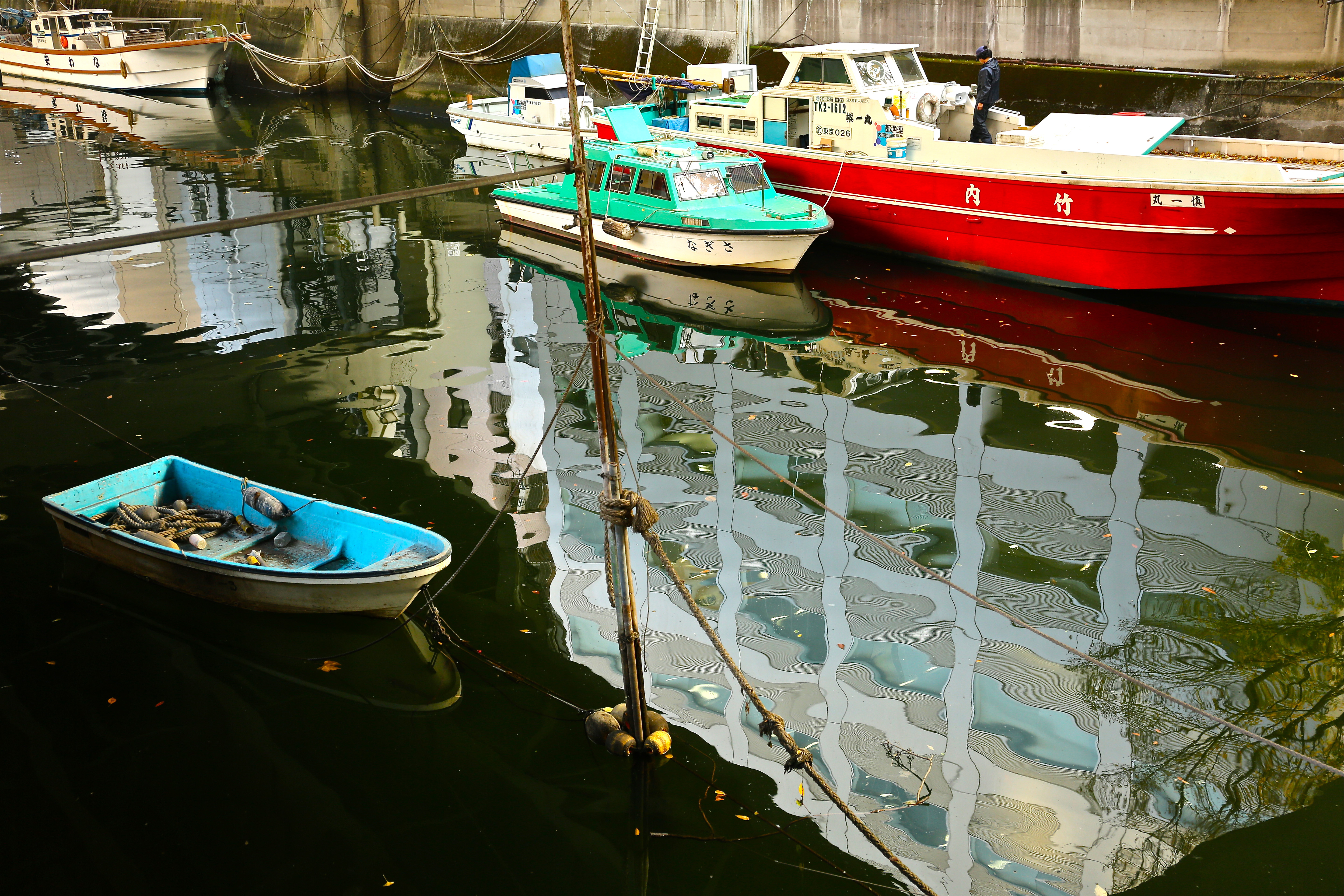

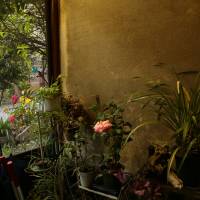
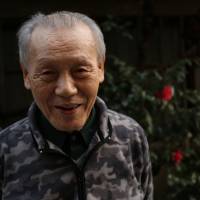

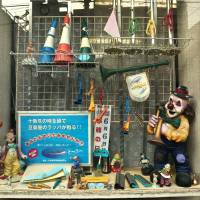
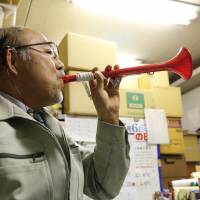
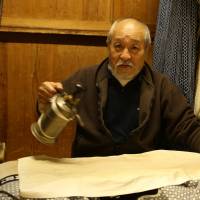










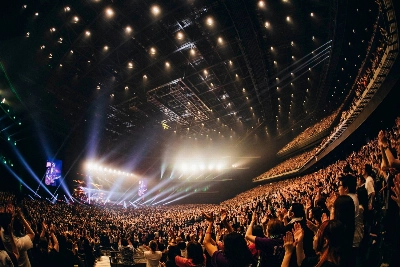


With your current subscription plan you can comment on stories. However, before writing your first comment, please create a display name in the Profile section of your subscriber account page.